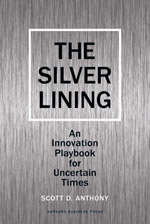
I have read Michael Watkins’s “The First 90 Days” quite a number of years ago. Arguably one of the must-have books for the corporate executives. In fact, the initial reception was so successful that the author has released a similar book targeting at the public sector.
6 years have passed since the author talked about critical success strategies for new leaders at all levels, what you should do and tackle on the first 90 days in your new role. Like many I suppose (half a million English copies sold and translated to 26 languages), I have a high anticipation for “Your Next Move”. Perhaps because I have gone through a few major career transitions in the past, or perhaps I may be anticipating a new move (don’t we all?), “Your Next Move” is an engaging read. I find myself constantly reflecting on my past transitions as well as reflecting upon what some of my colleagues – my bosses included – have done right or wrong when they first stepped onto their new roles.
While it may take a C-level to fully benefit “Your Next Move” (i.e. CEO, COO, CFO, and etc.), executives in any form of leadership capacity should find the first 5 chapters (out of eight) useful. Namely, the followings:
- A promotion up the career ladder.
- A promotion amongst your peers and now, you are the boss.
- A move from the position of authority to the position of influence.
- Joining a new organization with a new corporate culture.
- Relocating to a new geographic location and faced with a new culture.
Unless you have freshly graduated from school, you should have experienced at least one of the above transitions. The author uses real life examples to kick start each chapter (masked by fictitious names of course) and present the unique challenges faced. Guidelines to overcome the challenges are then presented in concise points that come with graphs, tables, and supported tools. The materials are practical, down to earth. One tip off my head is for those who are posted overseas to put family matters as the first priority and perhaps to start a blog to continue having family and friends’ support (!). It is evident that they are a result of years of dialogue between the author and the leaders. In several occasions, the author brings in different analogies to illustrate his points. Such as the organizational resistance to change as compares to the immune system of our human body (that has its merit for being resistance to potentially bad changes). Or to apply engineer’s thermodynamics concept to an organization environment.
The last three chapters are more for those who are in the position to turnaround an organization in trouble and to realign an organization in dire need for change. To accomplish that, the author introduces the STARS model – start-up, turnaround, accelerated growth, realignment, and sustaining success. And for those who are in the field of human resource or organizational excellence, there is also a concluding chapter on the design of “companywide transition-acceleration systems”. A list of what company can do to help new leaders in transition.
As a final note, “Your Next Move” covers a wide range of topics on career transition that also includes organization politics, which I find valuable as it is not a topic that can be easily dealt with. Useful tools aside, it is certainly a good set of checklists and tips (or guidelines) based on the lessons learned of many. Some of which I wish I had a chance to read during my past career transitions.
Hardcover: 256 pages
Suggested Retail Price: S$43.50 (US$26.95)
Publisher: Harvard Business School Press (October 6, 2009)
ISBN-10: 1422147630
ISBN-13: 978-1422147634
You may wish to get this book from Amazon.com.



